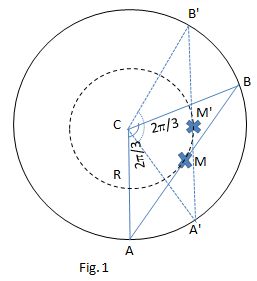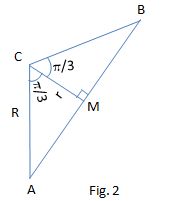Question #15b5e
1 Answer
The circle with the equation
Explanation:
Since the distance from the center of the original circle to any midpoint in a chord spanning a constant central angle is also constant , the locus asked for is other circle with a shorter radius but the same center of the larger circle, as we can see in Fig. 1

The equation of the larger circle is
#-2x_0=-3# =>#x_0=3/2#
#-2y_0=7/2# =>#y_0=-7/4#
#x_0^2+y_0^2-R^2=1/4# =>#R^2=9/4+49/16-1/4# =>#R=sqrt(36+49-4)/4=sqrt(81)/4# =>#R=9/4#
#-> (x-3/2)^2+(y+7/4)^2=(9/4)^2#
To find the shorter radius (

Since the segment CM acts as a bisector of chord AB and therefore
So the equation of the shorter circle is
#->(x-3/2)^2+(y+7/4)^2=(9/8)^2#
Or
#x^2-3x+9/4+y^2+7/2y+49/16-81/64=0#
#x^2+y^2-3x+7/2y+(144+196-81)/64=0#
#x^2+y^2-3x+7/2y+259/64=0#
#->64x^2+64y^2-192x+224y+259=0#

